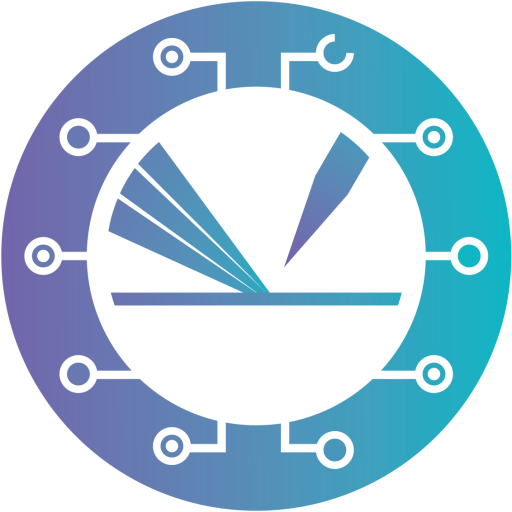Open-source ViPErLEED package for surface structure determination is available now

Low-Energy Electron Diffraction (LEED) is a true-and-tried technique for obtaining high-accuracy data in surface crystallography. LEED is based on the hypothesis of the wave nature of electrons by Louis de Broglie, published 100 years ago, and became a popular tool for surface science in the early 1960ies. The underlying physical principle is simple: Electrons scatter from the atoms of a crystal surface and form a diffraction pattern on a fluorescent screen. From the distribution and intensity (I) of diffraction maxima (“spots”) and their dependence on the electron energy (or acceleration voltage V), the surface crystal structure can be inferred. However, deriving quantitative measurements from LEED I(V) curves becomes an intricately complex problem once surfaces such as metal oxides are investigated. Multiple electron scattering and a gigantic phase space of surface reconstruction have long made LEED a prohibitively complex method.
The surface physics group at TU Wien has made yearlong efforts to make LEED a more user-friendly tool, in particular as part of TACO’s subproject P02. This endeavor has been named the Vienna package for Erlangen LEED (ViPErLEED) and aims at drastically reducing the effort for LEED I(V) studies. The package consists of three parts: (i) hardware and software for data acquisition, (ii) software for extracting I(V) curves from the experimental data, and (iii) software for calculation of I(V) curves for a given structure and structure optimization, by minimizing the difference between the calculated and experimental I(V) data. The two new articles, just published in the journal Physical Review Research, cover on parts (ii) and (iii) of the package and constitute a real milestone in quantitative surface structure determination.
The Spot Tracker is the software for automated spot tracking and extraction of I(V) curves from the experimental data. It is a plugin for the public-domain image-processing program ImageJ. Experimentally, I(V) curves are obtained by acquiring images of the LEED screen with a digital camera over a range of electron energies (typically, several hundred eV). This results in so-called LEED movies, where the diffraction maxima move radially as the electron energy varies. These LEED movies are processed by following the motion of the spots with energy (spot tracking) and evaluation of the intensity of each spot as a function of energy — the I(V) curves.
Several improvements with respect to previous programs for I(V) curve extraction have been introduced in the spot tracker. Most importantly, the improvements include an automated detection of spots, which greatly reduces the amount of manual work. The software then tracks the spots, even at energies at which they have vanishing intensity. The spot detection is improved further by using calibration images (dark screen, flat field) to account for transmission inhomogeneities in the electron optics. These calibration images are standard procedures in astronomical image processing and substantially improve the data quality. The software measures the spot intensities by aperture photometry, a method also used in many standard astronomical applications. Finally, the code also makes a sophisticated background subtraction for precise measurements of weak spots.
The second article deals with the software for the calculation of theoretical I(V) curves for a given structure and its optimization. The code is built on top and as an extension of the well-established Erlangen tensor-LEED (TensErLEED) package. However, it has a significantly reduced barrier for the entry of new users by an expedient use of default parameters. Most significantly, the code automatically detects surface symmetries and preserves them during optimization.
The comparison between the experimental I(V) curve and the theoretical calculation is performed through the so-called R factor, in particular, Pendry’s R factor (RP). This factor breaks down the agreement between experiment and theory to a single number between 0 (perfect match) and 2 (anti-correlation). Starting from an initial model, the code tries to optimize the match by inducing displacements to the atoms in the surface layers of the material and re-running the calculation to minimize RP. This is a complex task because the phase space for the position of many atoms is large and one must take care that the optimization does not erroneously converge on a local minimum of RP.
The computational performance of the TensErLEED package was improved both via top-level parallelization and through optimization directly in the TensErLEED code. The ViPErLEED developers tested their package on several different surface structures and different experimental setups. Even for the most complex structure tried so far, a (10×10) telluride superstructure on Pt(111), the processing time for spot tracking and I(V) measurement took less than a minute on a desktop computer. The calculation of theoretical I(V) curves and the structure optimization are computationally more demanding. The developers tested the code by optimizing an α-Fe2O3 surface structure: This task took about an hour on a single node of the Vienna Scientific Cluster. Thus, relatively simple structures may be computed within a reasonable time on a desktop computer, while for more complex structures or more accurate results, the use of a cluster is advised. Apart from faster computation, the ViPErLEED package provides an even more important advantage compared with previous LEED I(V) codes: The amount of manual work is greatly reduced, which also minimizes the potential for human errors.
The research articles appear in the open-access journal Physical Review Research and are available here:
Kraushofer F., Imre A. M., Franceschi G., Kißlinger T., Rheinfrank E., Schmid M., Diebold U., Hammer L., and Riva M., „ViPErLEED package I: Calculation of I(V) curves and structural optimization”, Phys. Rev. Research 7, 013005 (2025)
Schmid M., Kraushofer F., Imre A. M.; Kißlinger T., Hammer L., Diebold U., and Riva M., „ViPErLEED package II: Spot tracking, extraction and processing of I(V) curves”, Phys. Rev. Research 7, 013006 (2025)
The codes are available on GitHub.
The third article in the series describing the hardware and software for the data acquisition is forthcoming.

